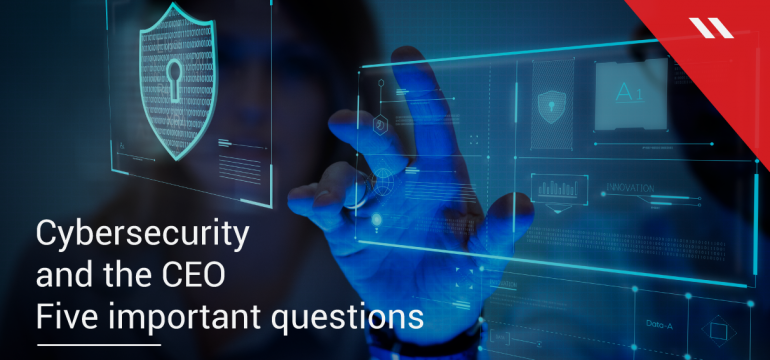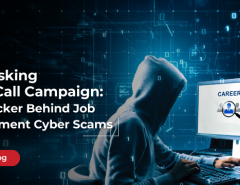As the captain of the ship, the Chief Executive Officer (CEO) plays a very important role in how an enterprise addresses cybersecurity issues and concerns. When the CEO provides a buy-in towards making enterprise security safer, it trickles down as a new mindset for the entire organization.
The 9th Annual Cost of Cybercrime Study 2019 revealed a significant statistic – the average cost of cybercrime for an organization increased by $1.4 million to $13 million in 2019.
More than anything else, this is the most important statistic which illustrates why cybersecurity is one of the most important issues that a modern organization must deal with. It is no longer a question of IT or Information Security – it is a business issue as important as anything else which leaders need to deal with urgently.
But to create that mindset, what kind of questions should a CEO be asking? Here are five important ones:
-
How prepared is the enterprise right now to handle cyber risks?
The CEO, as the most important leader in the company, must know and that too, in minute detail, about his company’s preparedness to current threats. The leadership must have detailed visibility of how the enterprise is dealing with these risks, what measures they are taking and also, what threats are slipping through the net. This question is the first starting point for the CEO and the answer to this question will provide a complete understanding of where the enterprise is currently placed when it comes to cybersecurity. On the basis of that, plans for the future can be made.
-
Does the senior leadership buy into the current cybersecurity framework? If not, why?
CEOs head organizations but they can never be a one-person army. Great organizations surround CEOs with a team of competent leaders who come together to form one unified front. It is in the same way that a company’s senior leadership team comprising the C-suite must also showcase a united stand towards cybersecurity measures taken by the enterprise. This helps in better compliance and inculcation of a security-first mindset among employees. However, this is easier said than done and that is why a CEO must ask this question.
If the CEO finds out that this is not the case, the first step is to get the entire leadership team on board.
-
What is our plan for responding to cybersecurity incidents? How regularly has it been tested?
Cybersecurity is not a zero-sum game – there is always a scope for malware to sneak through despite the best possible measures. This is why an Incident Response Plan comes in handy as it details the actions to be taken for different kind of incidents. The CEO must be aware of every intricate detail of this plan as in times of a crisis, they will need to show that they are in control. CEOs must also keep themselves abreast of how regularly this plan is tested so that they are aware of any shortcomings in it.
-
Do the employees have a cybersecurity mindset?
Employees are the single biggest factor in cybersecurity preparedness for an enterprise. The CEO must be aware of the current culture of cybersecurity in the organization – are employees aware of the dangers that cyber threats may pose or do they still remain blissfully unaware? If the answer is the latter, the CEO must immediately put in place a plan to create a mindset of cybersecurity in the entire organization.
-
How does the enterprise handle insider threats?
Cybersecurity is not always an external affair – in many cases, danger lurks within the enterprise in the form of insider threats and disgruntled employees. It is not just the InfoSec team that has to be aware of this – the CEO must ask leading questions about this dangerous type of threat and the kind of the measures the company is taking to tackle this threat.
Creating a cybersecurity culture in an enterprise is not easy but investing in a strong enterprise solution goes a long way in protecting an organization from the varied threats that exist. Seqrite’s range of solutions enables security and greater productivity in the cybersecurity journey.




